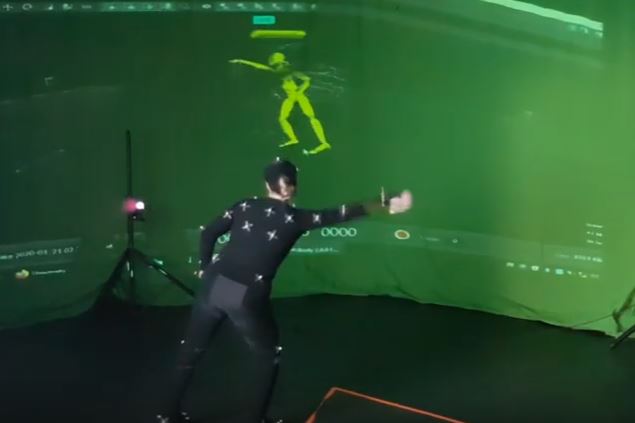
Project Title: Embodied Dance Improvisatory Approaches: Exploring the Sculptural Qualities of Improvising Bodies within Motion Capture Environments
Supervisors: Dr Joanne Scott and Dr Richard Talbot
Abstract
This thesis examines the relationship between experiential events of improvising bodies and expressive movement qualities and proposes that working with sculptural qualities offers an innovative approach to dance improvisation within a motion capture environment. Through Practice-as-Research, informed by current critical theory on praxis, this research focus on the sculptural qualities as a lived experience intertwined in-between body, self, and the world. Through the feedback loops extend the body in a meaningful way of “being-towards-world”, a temporal dialect between the I-body-as-sensory-Device.
The ‘praxis’ (Nelson, 2013) of this research embodies both practical and phenomenological theories to establish a framework for accessing and activating sculptural qualities of improvising bodies through technologically innovative means. It addresses the practice engaging with Robin Nelson Multi-mode epistemological model for PaR (2013) with a combination of ethnographyic theory, and reflections utilising hermeneutic and interpretive phenomenology analysis, and document(ation). The phenomenology of lived experience is examined through the lenses of Maurice Merleau-Ponty’s works (1945, 1962, 1964), and Andy Clark (2008) extended embodied mind-body. The initial outcomes of the research evolved from two phases of the praxis so far.
The articulation of the processual and relational approach to understanding sculptural qualities was developed by examining the kinetic experience, responses, and aesthetics in three-dimensional space enabled the research to engage a visualisation of sculptural motion in the form of ‘trace-forms’ (Laban, 1966, 2011) and its aesthetic qualities as line-visuals (using Motive software) and dots/points with particles (using Touch Designer software).
The feedback loops and in its total hermeneutic “loopiness” (Clark, 2008) enabled explorative visualisations and kinesthesis experiences and responses of the user-dancer/user-research. The core elements of sculptural qualities arise from these looping feedback explorations on how to activate and access it. These are: repetition, accidental choreographies, stillness (as a state), stillness with T-pose. Four participants engaged with the workshop and through reflective practice as defined by Donald Schön (1983, 1991) they developed the core elements of sculptural qualities: Accidental Micro-Choreographies, Stillness as a State, T-pose with Stillness, and Repetition.

Bio
Lucie Sykes is an academic, researcher and an artist in dance and digital performance practices. She is currently pursuing a PhD by practice as research in the School of Arts, Media and Creative Technology, at the University of Salford. Her research title is: An exploration of the sculptural quality of an improvising body through its visualisation in digital environments.
Lucie Lee (married name Sykes) is fascinated by movement and the interface between the body and digital technologies. Lucie uses interdisciplinary approaches to explore improvisation to enhance making/creating movement and dance composition. Lucie Lee was selected to be one of twenty-one UK choreographers for the Choreographers Observership Scheme 2017/18 with One Dance UK.
Lucie Lee Dance is an emerging experimental dance digital and theatre company whose work investigates the inter-relationships between Art and Science. Lucie Lee Dance uses cutting edge digital technologies to explore themes of embodiment, human-machine interaction, drawing inspiration from physical phenomena. Lucie Lee Dance creates interactive dance digital performances and interactive installations, which have multi-sensory outputs.
Email: l.sykes2@edu.salford.ac.uk
Instagram: @Lucie.Sykes.Research @LucieLeeDance
Twitter : @LucieLeeDance